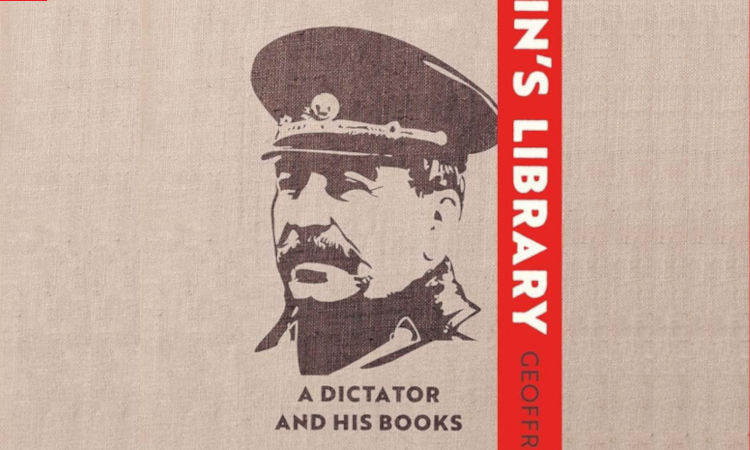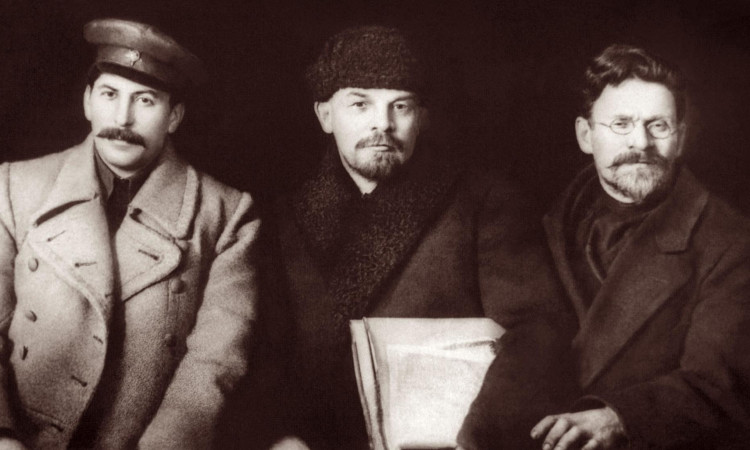The last issue of Proletarian carried an article titled ‘Soviet ballet: dancing the heritage of humanism’. Included in the article was this statement: “The cultural trends of Bolshevik policy during the Stalin era and the formidable state-backed social realism of the 1930s were given particular manifestations using the classical form of ballet. It is fruitful for communists today to explore this relationship between the demands of cultural policy and the way those demands were met by artists.” The article, and the above statement in particular, reminded this writer of the Red Army choir.
Like the Bolshoi ballet, the splendour of the Red Army choir reflected the cultural heritage of Russia and the USSR through socialist realism. The choir was created in 1928, during Stalin’s era, and was initially made up of twelve soldiers, all Bolsheviks who had fought against British imperialism’s war of intervention, during which Winston Churchill famously called for the “Bolshevik baby” to be “strangled at birth”.
The choir was founded by Alexander Vasilyevich Alexandrov, who came from a peasant family, and its mission was to bolster the courage of soldiers during their combat with imperialist invaders, helping to instil a patriotic spirit into them by means of familiar traditional songs.
Alexandrov was also famous as the composer who wrote the music for the Soviet national anthem, also known as the Hymn of the Soviet Union – music that was so beloved by the Soviet people that it was retained for the Russian national anthem after the fall of the USSR.
The choir was formed from the Frunze Red Army – Mikhail Frunze being a seasoned Bolshevik and a major Red Army commander during the civil war and war of intervention that followed the October Revolution, and who served as the USSR’s minister of defence in the mid-1920s. In 1929, the Red Army choir toured the Soviet Union with a repertoire of popular songs that were aimed at boosting the morale of troops who were building the Orient railway, a key task of socialist construction.
Comrade Stalin, as leader of the Bolshevik party and of the USSR, realised that the Soviet motherland was backward compared to European imperialist nations and had to be transformed into a modern socialist state. In this epic struggle, Stalin and the Communist Party of the Soviet Union (Bolsheviks) [CPSU(B)] could totally rely on the artistic talents of the Red Army choir, which represented the USSR – its fraternity and strength – in the cultural field.
The Soviet government realised that the Red Army and its choir had to struggle with the enemies of socialism, both within the USSR and from abroad. This fact led to the further development of the choir, in which the singers were like the combatants for whom they sang. They formed, in fact, a military theatre. Stalin also asked Alexandrov to relocate to Moscow.
In 1930, with peace having been restored throughout the USSR, the mission of the Red Army choir changed, so that when the singers toured they spread the ideals of the Soviet state. Their repertoire of songs that combined the best of both new and old Russia caused people to feel the changes that were being made in the USSR – changes that glorified the Great October Socialist Revolution.
By 1933, the choir had grown to 19 performers; in 1935 there were 135; and in August 1937 there were 150 – when the Red Army choir went to the Universal Exhibition in Paris and won the Grand Prix, the highest honour bestowed by the jury, giving the French proletariat a live glimpse of the socialist revolution.
In 1935, the choir was awarded the Order of the Red Banner and was renamed the Red-Bannered Red Army Song and Dance Ensemble of the USSR. The songs and dances of the choir covered Russia’s entire history, while the characteristic bass voices interacting with the virtuoso tenors appealed to music lovers all over the world.
The songs of the choir fell into four groups:
– Group one: old soldiers’ songs. For example:
Farewell of Slavianka, which was composed in 1912 and is based on events in the Balkan wars and the liberation from 500 years of Ottoman rule. This popular song was heard in Red Square on 7 November 1941, when it was played by massed bands as a prelude to the march of the Red Army to the front line.
The Soldiers’ Chorus from V Shaporin’s opera The Decembrists, and sung by soldiers crossing the Danube for the war against Turkey and celebrating their courage.
The Brave Lads of the Don, a Russian folk song that tells of events in the 1812 war against Napoleon, and the warriors from the Don region who helped to defend Moscow.
– Group two: songs of the civil war. For example:
O Field, My Field, a choral episode from a symphony by L Knipper, which is described by the writer as a Komsomol warrior poem.
We Are the Red Cavalry.
There, Far Away, Beyond the River, a song which won popularity as soldiers returned home after the civil war and the war of intervention, which lasted until 1925.
– Group three: songs of the Great Patriotic War
The Sacred War, whose words were published in Izvestia on 24 June 1941, with music written by A Alexandrov on the same day. He wrote the notes on a blackboard and the singers copied them down manually. The song was performed by the Red Army choir on 27 June in the Belorusky railway station to the soldiers leaving to fight the Nazis. Eyewitnesses reported that it was sung five times in succession.
This call to arms was performed throughout the USSR and was described by Major-General A Kronik, who heard it on the eastern front: “When we heard the sounds of The Sacred War, which had become a genuine folk song, the hearts of officers and men trembled within them. Raw recruits and hardened soldiers, with their scars and moustaches, felt the same. Everyone clutched his rifle. I looked at the soldiers and officers, my brother-warriors, and with all my heart I felt their readiness for action.”
The Sacred War was an inspiration not only to the Red Army, but to the millions of Soviet proletarians who were left at home. Josef Stalin was highly impressed with the song and it won two Stalin prizes.
The Sacred War
Arise, vast country,
Arise for a fight to the death
Against the dark fascist forces,
Against the cursed hordes.
Chorus: twice
Let noble wrath
Boil over like a wave!
This is a people’s war;
a sacred war!
We shall repulse the oppressors
Of all ardent ideas.
The rapists and the plunderers,
The torturers of people.
Chorus
The black wings shall not dare
Fly over the Motherland,
On her spacious fields
The enemy shall not dare tread!
Chorus
We shall drive a bullet into the forehead
Of the rotten fascist filth,
For the scum of humanity
We shall build a solid coffin!
Chorus: twice
Other songs in the third group include There Marched the Soldiers, In the Forest by the Combat Line, The Sun Set Beyond the River and On the Road. These depict the Red Army defending the motherland, remembering the peaceful life before the Nazi invasion, and recalling comrades who had given their lives in the epic struggle.
The Red Army were forced to retreat during the first attack by the fascist enemy, which reached the borders of Leningrad. Yet despite a siege lasting two-and-a-half years (900 days), the Nazis failed to triumph.
From June 1941, the Red Army choir returned to its original role and gave more than 1,500 frontline concerts for troops about to fight the Nazis, appearing at gun emplacements, airfields and hospitals. The support given by the choir, in harsh conditions, provided considerable spirit to the army.
– Group four: popular Soviet folk songs
These include Song of the Volga Boatmen, Troika, The Cliff and Dark Eyes, depicting respectively boatmen singing when hauling a heavy barge; a coachman telling his troubles to a fare about his former wife, who had married a rich old man; a cliff overlooking the Volga and the hero Stenka Razin who was the leader of the poor against tsarist tyranny during the 17th century; and a gypsy romance that is derived from a waltz by Waldteufel.
AV Alexandrov died on 8 July 1946, and his son, Boris Alexandrovich Alexandrov took over as conductor of the choir. Under his leadership the choir made worldwide tours and gained international fame.
During his tenure, the famous party trick of the choir was that Boris would leave the stage and allow the choir to perform En Route alone. The choir members were so disciplined and experienced that they could feel the rhythm simultaneously and were able to sing and play together, without their conductor. At one concert in Canada, the choir sang alone for a full half hour.
In 1985, when Mikhail Gorbachev began the accelerated policy of revisionism that led to the complete collapse of the USSR, he separated the Red Army choir from the Red Army, and it was renamed the AV Aleksandrov Russian Army Song and Dance Ensemble.
Yet despite Gorbachev’s treachery the ensemble is still popularly known as the Red Army choir. Tragically, on 25 December 2016, a Russian defence ministry aircraft was carrying 64 members of the Red Army choir when it crashed off the coast of Sochi, with no survivors.
The artists were on their way to Latakia in Syria, where they were to have entertained the Russian soldiers stationed at the Khmeimim military base, as part of Russia’s fraternal assistance to the Syrian people’s struggle against terrorism and imperialism. These 64 dedicated artists joined the long roll of honour of Soviet and Russian martyrs who have laid down their precious lives while fulfilling their internationalist duty.
But not even this cruel blow could subdue the Red Army choir. After just five weeks, following auditions held in January 2017 by the Russian defence ministry, it was reformed in time for the Defender of the Fatherland Day celebrations on 18 February 2017. That concert was swiftly followed by others, both in Russia and in a number of European countries.
Clearly, despite the temporary defeat of socialism in the USSR, there are remnants of socialist culture that remain, loved and cherished by the people. They a reminder of what was formerly achieved and will be again, pointing the way to the time when socialism is restored and when proletarian culture will once more give full expression of the lives of the workers as they labour to free humanity from exploitation and build a truly civilised world.
















